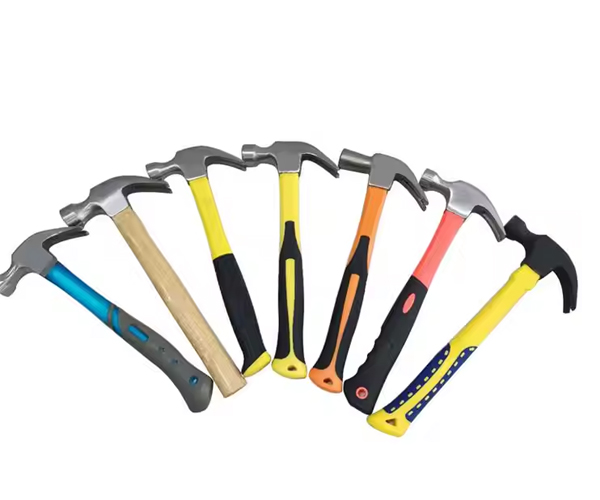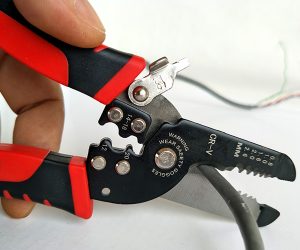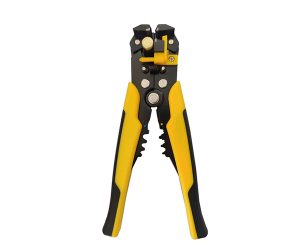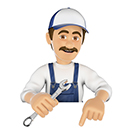Introduction
Welders face countless challenges when crafting metalwork. One common hurdle is removing slag, shaping metal, or ensuring clean joints—tasks that require specific tools for efficiency. The hammer, a versatile and indispensable tool, plays a crucial role in a welder’s toolbox. But not all hammers are created equal, and choosing the right one can make all the difference. In this article, we’ll explore the hammers welders are most likely to use and why these tools are essential for their trade. Let’s dive into the world of welding hammers to ensure you’re equipped with the right knowledge.
What Are Hammers Used for in Welding?
Hammers in welding serve critical purposes beyond simple force application. They assist welders in various tasks, such as removing slag, shaping metal, and even cleaning up after a welding project. For instance, after welding a bead, slag often forms on the surface. Removing this slag is essential for ensuring a clean, polished finish. This is where a chipping hammer comes into play, as it is designed specifically for this task.
Additionally, hammers are used in shaping and bending metals during the welding process. Welders often encounter situations where metal needs slight adjustments, such as bending or aligning it with other components. The right hammer ensures precision and avoids damage to the material. Beyond shaping, hammers play a role in prepping joints before welding. Achieving a perfect fit between two pieces of metal can significantly improve weld strength.
A welder’s hammer must also withstand extreme heat and rigorous use. These tasks demand a robust design, durable materials, and ergonomic handles for ease of use. Without a high-quality hammer, welders may struggle to maintain efficiency and consistency in their work. This is why understanding the purposes and types of welding hammers is so important.
General Categories of Hammers
Hammers come in various categories, each serving distinct purposes in welding and beyond. Broadly, hammers are categorized based on their design and intended use. For example, claw hammers are often used in carpentry, while ball-peen hammers and sledgehammers cater to metalworking needs. Understanding these general categories helps welders choose the most appropriate tool for their tasks.
For welders, some hammers are indispensable due to their functionality. Ball-peen hammers, for example, are well-known for shaping metal and creating precise curves. Chipping hammers, on the other hand, are specifically designed to remove slag and spatter, making them essential in post-weld cleanup. Similarly, sledgehammers are utilized for heavy-duty tasks like breaking or reshaping metal.
Welding-specific hammers often differ from standard ones in terms of heat resistance, handle material, and durability. They are built to withstand the challenging conditions welders face daily. By understanding these categories, welders can ensure they have the right tools for the job, whether it’s precision shaping or heavy-duty metalwork.
The Chipping Hammer: A Welder’s Best Friend
The chipping hammer is arguably the most iconic tool in a welder’s arsenal. Its primary purpose is to remove slag and spatter from a weld bead. Without this tool, welders would struggle to achieve the smooth, polished surface required for quality work. The unique design of a chipping hammer, with its pointed tip and flat edge, allows for precision and versatility during cleanup.
Beyond slag removal, the chipping hammer is useful for cleaning areas around the weld and preparing surfaces for painting or further processing. Its compact size and lightweight design make it easy to handle, even during extended use. Additionally, many chipping hammers feature spring handles to absorb shock, reducing fatigue for welders working on large-scale projects.
Another reason welders favor the chipping hammer is its affordability and durability. These tools are built to withstand intense use, ensuring they last for years in demanding environments. For welders looking for a reliable and essential tool, the chipping hammer remains a top choice.
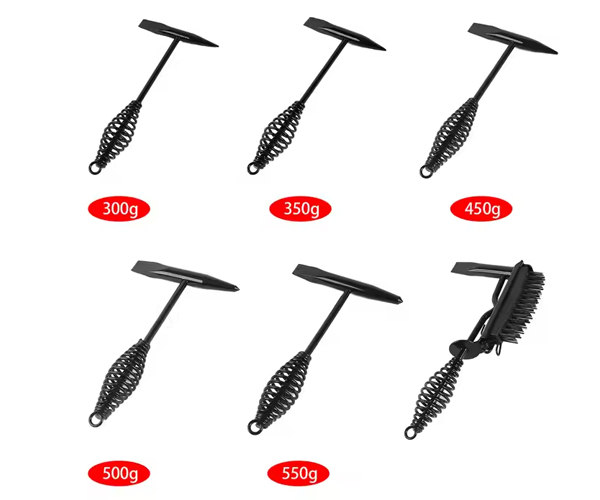
Ball-Peen Hammer in Welding
The ball-peen hammer is another common tool in welding, known for its versatility and durability. Welders often use this hammer for shaping and bending metal. Its rounded head is perfect for creating smooth curves, while the flat side is used for striking and shaping.
One of the key advantages of the ball-peen hammer is its ability to work with both delicate and heavy-duty metals. Welders use it to create precise indentations or align materials before welding. This makes it especially useful for tasks that require precision and control. Moreover, its robust construction ensures it can withstand repeated use without losing effectiveness.
The ball-peen hammer also finds its place in post-welding tasks, such as smoothing rough edges or adjusting metal components. Its versatility and durability make it a must-have tool for welders aiming for high-quality results in their projects.
Sledgehammers in Welding Work
Sledgehammers are essential for heavy-duty tasks in welding. These hammers provide the force needed to break, bend, or reshape large metal components. Welders often rely on sledgehammers when dealing with thick materials or dismantling structures.
The sledgehammer’s long handle and heavy head make it ideal for applying significant force with minimal effort. This is particularly useful in situations where precision is less important, but brute strength is required. Welders working in construction or industrial settings often keep a sledgehammer in their toolbox for these purposes.
While not as commonly used as chipping or ball-peen hammers, the sledgehammer plays a vital role in specific welding scenarios. Its ability to handle large-scale tasks makes it a valuable addition to any welder’s toolkit.
Cross-Peen Hammer: Is It Common in Welding?
The cross-peen hammer, though less common in welding, has its uses. Its design, featuring a wedge-shaped peen opposite the striking face, makes it suitable for tasks like bending or stretching metal. Welders may use this hammer for tasks requiring precision and control.
One of the primary advantages of the cross-peen hammer is its ability to create clean, sharp lines on metal surfaces. This is particularly useful for decorative welding projects or intricate metalwork. While it may not be as versatile as the chipping or ball-peen hammer, the cross-peen hammer is invaluable for welders focusing on detail-oriented tasks.
For welders who frequently work on artistic or custom projects, the cross-peen hammer can be a worthwhile addition to their toolbox.
Specialty Hammers for Welding Tasks
Specialty hammers, such as dead blow and soft-face hammers, also have a place in welding. Dead blow hammers, designed to reduce rebound and deliver controlled force, are ideal for delicate tasks. Soft-face hammers, on the other hand, prevent damage to finished surfaces, making them useful for final adjustments.
These specialty hammers cater to specific needs, ensuring welders have the right tools for every task. Their unique designs and materials make them indispensable for certain projects.
Material Considerations: What Should a Welding Hammer Be Made Of?
A welding hammer’s material significantly impacts its performance. Most are made from hardened steel for durability, but other materials, like brass or plastic, are used for specific tasks. Welders must consider factors like heat resistance and impact strength when choosing a hammer.
For environments with flammable materials, non-sparking hammers made of brass or aluminum are essential. By selecting the right material, welders can enhance safety and efficiency in their work.
Comparing Welding Hammers by Price and Quality
Welding hammers come in a range of prices, from budget-friendly options to high-end models. While cheaper hammers may be appealing, they often lack the durability and performance of higher-quality tools. Investing in a reliable hammer ensures long-term value.
For welders, balancing cost and quality is crucial. A well-made hammer can save time and effort, making it a worthwhile investment.
Welding Hammer Maintenance Tips
Maintaining a welding hammer extends its lifespan and ensures consistent performance. Regular cleaning, proper storage, and timely replacement of worn parts are essential.
By following maintenance best practices, welders can keep their hammers in optimal condition, ready for any task.
Safety Tips When Using Hammers in Welding
Safety is paramount when using hammers in welding. Proper handling techniques, protective gear, and awareness of surroundings are essential for preventing injuries.
By prioritizing safety, welders can minimize risks and work efficiently.
How to Choose the Right Hammer for Your Welding Tasks
Choosing the right hammer depends on the specific tasks at hand. Welders should consider factors like material, design, and intended use when selecting a hammer.
By matching the hammer to the job, welders can achieve better results and enhance their workflow.
Additional Tools That Complement Welding Hammers
Welding hammers are often used alongside other tools, such as wire brushes and grinders. These complementary tools enhance efficiency and ensure high-quality results.
By investing in a well-rounded toolkit, welders can tackle any challenge with confidence.
What’s the most durable hammer for welders?
The chipping hammer is often considered the most durable for welders. Made from hardened steel, it withstands high impact and intense heat, making it perfect for removing slag and spatter. Ball-peen hammers are also highly durable for shaping and striking metal.
Can a standard hammer be used for welding tasks?
While a standard hammer may handle basic tasks, it lacks the specialized features required for welding, such as heat resistance and precision. Welding hammers, like chipping or ball-peen hammers, are specifically designed to handle the demands of welding work and provide better results.
How do I maintain my welding hammer?
To maintain a welding hammer, clean it regularly to remove dirt, slag, or debris. Store it in a dry place to prevent rust, and inspect it frequently for signs of wear, such as loose handles or chipped surfaces. Replace worn-out hammers or parts immediately to ensure safety and effectiveness.
What’s the best hammer for beginners?
For beginners, a chipping hammer is an excellent choice. It’s affordable, easy to use, and specifically designed for welding tasks like slag removal. A ball-peen hammer can also be a good addition for shaping and bending metal.
What makes a welding hammer different from other hammers?
Welding hammers are designed to withstand high temperatures, heavy impacts, and prolonged use. They feature durable materials like hardened steel and ergonomic handles to reduce fatigue. Many also have specialized designs, such as pointed tips and flat edges, to cater to welding-specific tasks.
Conclusion
Choosing the right hammer is crucial for welders aiming for efficiency and quality. From chipping hammers to ball-peen and specialty options, each tool has a unique purpose. By understanding their uses and investing in quality tools, welders can tackle any project with confidence. Don’t hesitate to upgrade your toolbox with these essentials.
Call to Action
Looking for reliable and high-quality hammers for welding? At KOLARWIN TOOLS, we specialize in manufacturing OEM hammers tailored to your specific needs. Whether you’re a distributor, wholesaler, or retailer, our durable and customizable hammers are built to meet the highest industry standards.
Partner with us to ensure your clients receive tools they can trust. With our expertise, competitive pricing, and commitment to quality, we’re here to help you succeed in your market.
Contact us today to discuss your OEM hammer requirements and take your product offerings to the next level. Let’s build success together!

